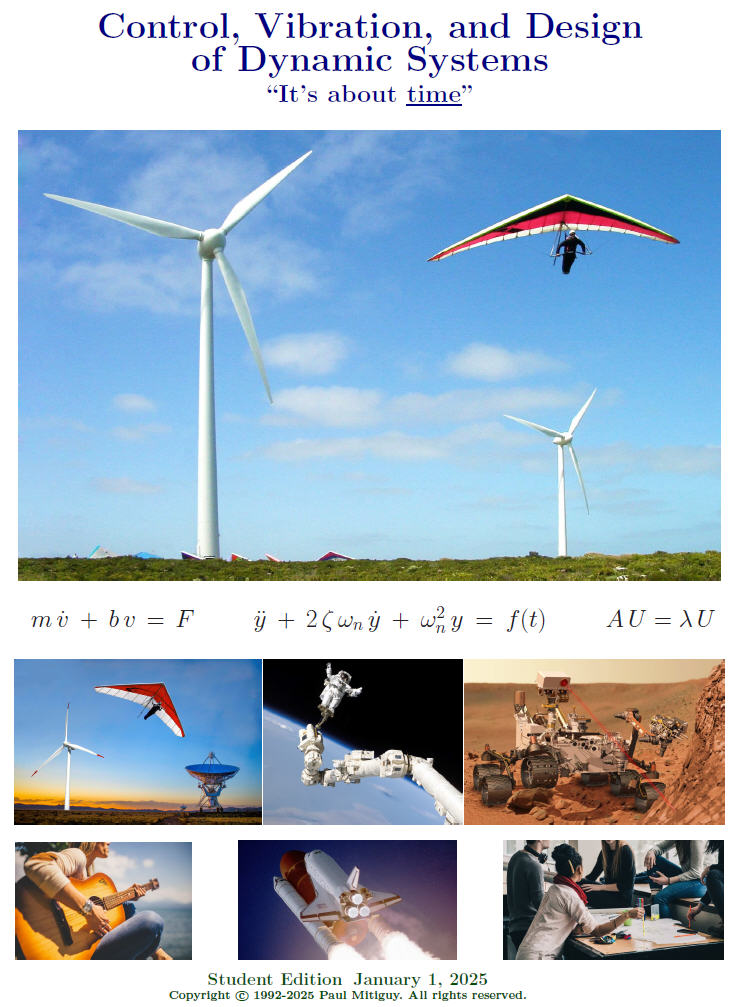It's about time
This textbook provides tools to predict and control dynamic systems with modern analytical skills, including trigonometry, calculus, differential equations, complex variables, Laplace transforms, electrical circuits, Taylor series & linearization, linear algebra, eigenanalysis, controls, and
The textbook facilitates engineering skills with physical systems from a wide range of engineering applications (mechanical, aerospace, robotics, bioengineering, and controls). Physical demonstrations and computer simulations include system identification, time constants, period, Coulomb/viscous friction, mass, stiffness, damping, natural frequency, damping ratio, decay ratio, overshoot, settling time, rise time, pole location, harmonic forcing, resonance, steady-state & transient response, stability, feedback-control gains, control effort, Bode plots, root locus, and modes.
With over 175 interactive problems and thousands of guided steps, this resource empowers engineers to model real systems, size physical constants (motor constants, springs, dampers, mass, resistors, capacitors, inductors), linearize and perform stability analysis, design control systems (PID, state-space, feed-forward, on/off) and low/high-pass filters, design for performance, and interpret results. Optional (not required): It leverages computational tools such as MATLAB® and interactive visually-appealing Working Model simulations for conceptual insights into dynamic systems and controls.
Training for professional skills
Engineers are motivated to learn when they solve interesting relevant problems and acquire professional skills. The 175+ interactive guided problems use small intelligible steps to lead engineers through complicated procedures so they synthesize the step-by-step process and ultimately arrive at a physically significant and satisfying result. The guidance reduces frustration, fosters confidence, provides valuable skills, and efficiently provides a positive high-quality, focused learning experience.

